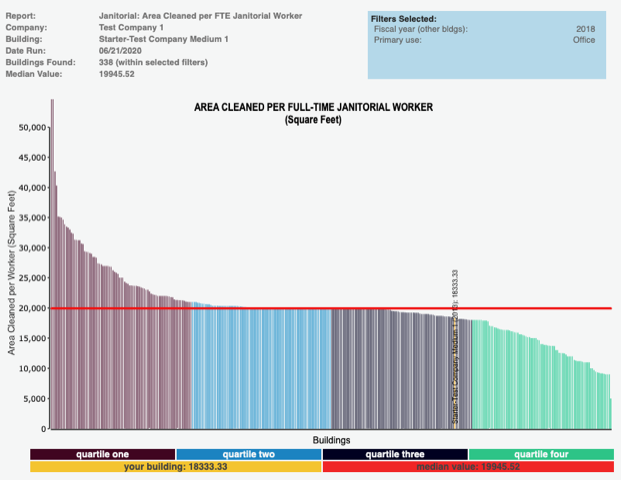June 2020 — In last month’s article we reviewed how to benchmark for security staffing in a COVID-19 world. This month’s article will review how you can do this for janitorial staff (for either your internal staff or contractors). Since janitorial costs are primarily comprised of labor, having the right staffing level is the key to an appropriately clean facility as employees, many who have been working from home, return to work.
As you reopen facilities from the pandemic, one of the most likely scenarios will be staggered shifts or days and partial use of the facility. One key aspect to keeping the facility appropriately clean is to limit employee access to certain areas of floors based on those staggered shifts or staggered days. For example, if Marketing will be in the facility on a staggered shift on Mondays, then limit the access of Marketing to just their area or floor on Mondays. This will allow for deep cleaning and sterilization of the areas used by Marketing by the janitorial staff, while other (unused) areas of the facility will not have to be cleaned at all.
Consider the impact this approach will have on janitorial costs. If various groups bring in “work from home” (WFH) employees one day a week and they continue to work from home the rest of the time, then you would only need to clean about one-fifth the facility on a daily basis. COVID-19 will require a much more intensive cleaning effort so you will probably begin the process with the existing staff. The cleaning effort on an occupied area may require three to five times as much effort so the janitorial staffing levels may be about right. They will just be deployed in a different manner. The key is to keep unoccupied areas closed or you will have to clean all areas of the building.
So we still can use the existing benchmarks to see if the staffing is about right. It is our experience that most organizational staffing level questions come down to total staffing levels. In the case of janitorial services, nearly all the cleaning will be provided by the contractor so in most cases total staff and staffing by contract workers will be the same value. One aspect that you need to look at carefully is how the FTE count is calculated. Many contractors will use part time help and you may have, for example, 10 people in a building for 2 hours each day for 5 days per week. The FTE in this example would be calculated at (10 X 2 X 5)/40 hrs./wk. = 2.5 FTE
We have an example from FM BENCHMARKING to illustrate how easy and valuable the process should be and how you can avoid the problem of too much or too little staff. This approach needs for you to obtain the key output report of staffing per cleanable area.
Figure 1 shows the staffing level performance compared to that of other office buildings. Note that the range of staffing in the second and third quartiles ranges from 21,000 to 18,050 SF cleaned per person. The horizontal red line is the median (just under $20,000) and intersects the graph at the junction between the 2nd and 3rd quartiles.

Figure 1 – Area Cleaned per Person
Filters: Type of facility: Office
Provided courtesy of FM BENCHMARKING
Our building is shown in yellow near the right side of the third quartile with a value of 18,333 SF cleaned per worker. Now consider the impact from staggered shifts, of only cleaning one-fifth of the facility on a daily basis. The janitorial staff should be able to effectively clean those areas at least four times the previous cleaning level and still clean the common areas of the facility such as lobbies, stairways, and elevators in the same time that it took for them previously to clean everything with less deep cleaning.